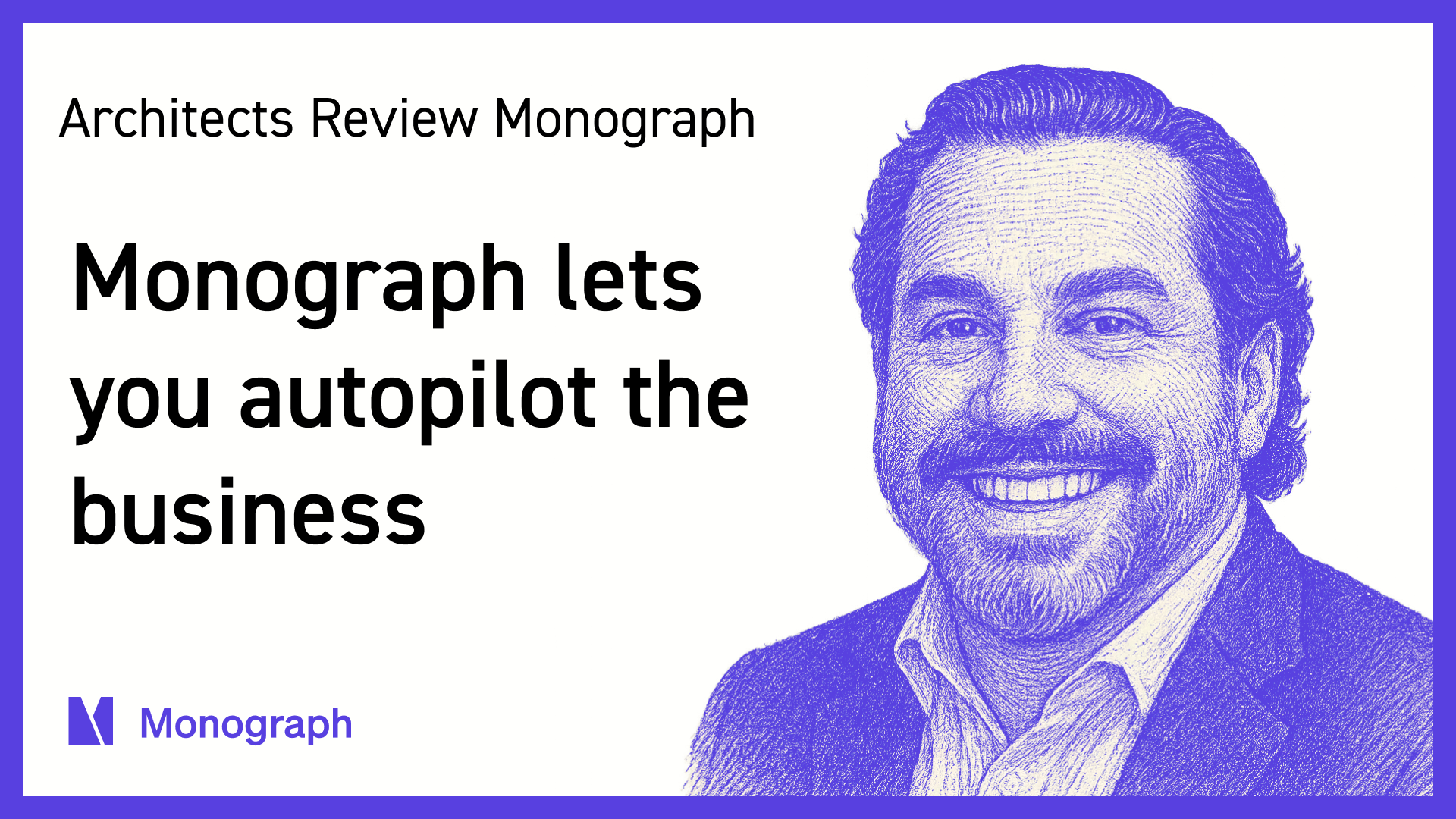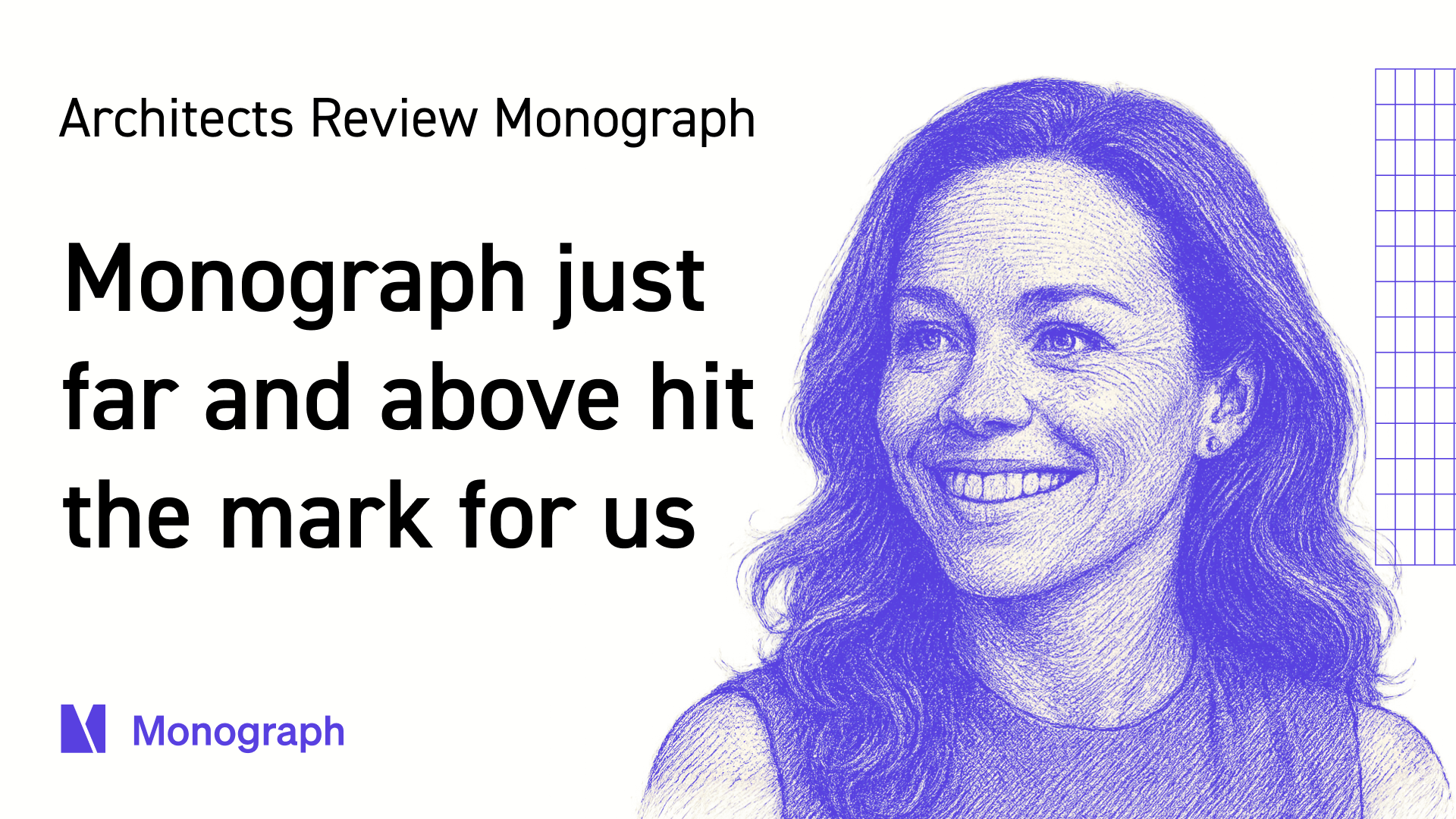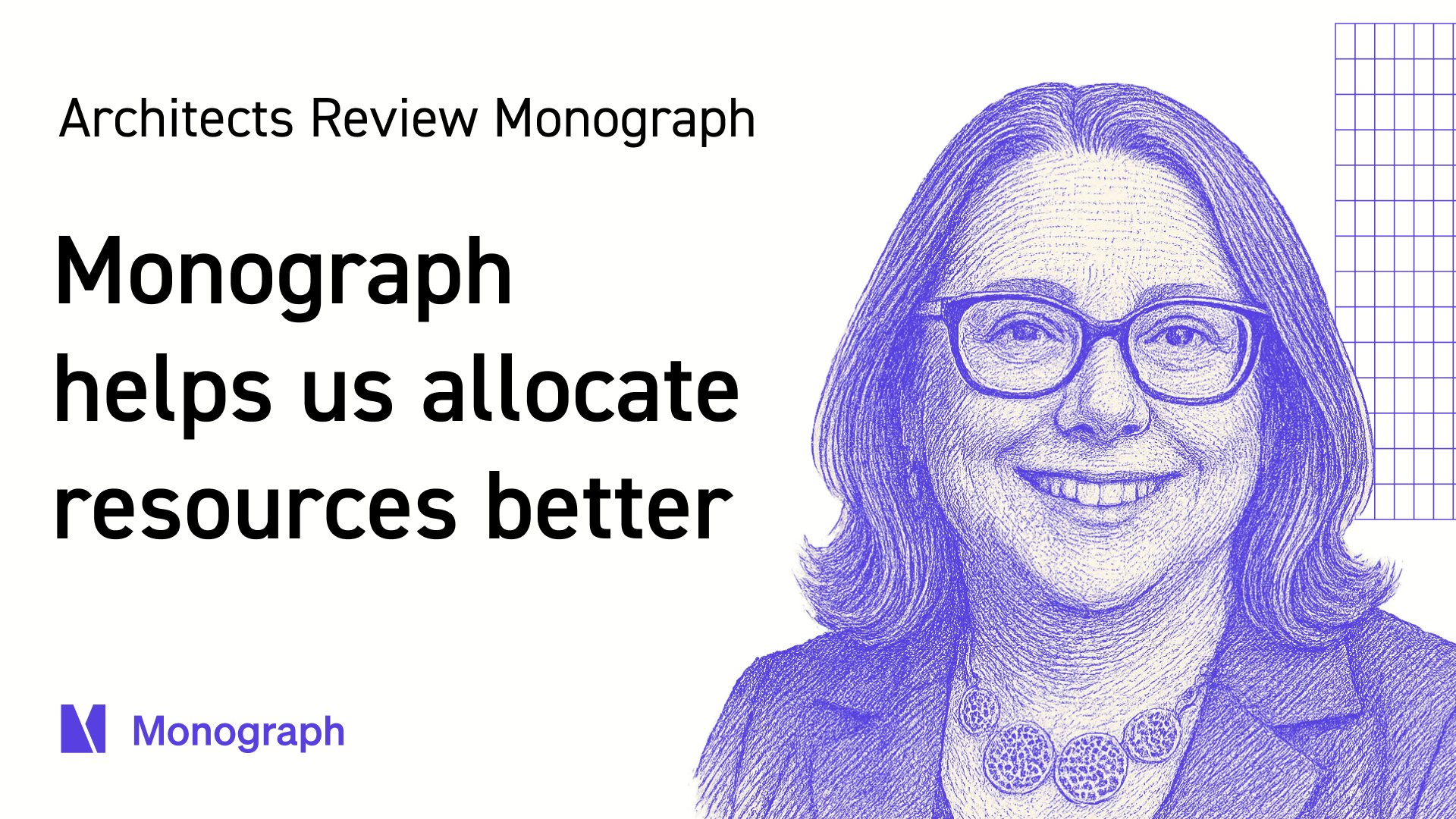Contents
Firm profile
AMB Architects is a mission-driven architecture firm specializing in office, medical, and retail projects throughout Houston, Texas. With 10 people managing 300 projects annually, the firm has built its reputation over 19 years on an efficiency-first philosophy and intentional work-life balance culture. Founded with the goal of keeping women in architecture, AMB maintains 40-hour work weeks while delivering exceptional results for long-term clients. The firm was recently recognized as a "Best Place to Work in Houston."
The Hidden Cost of Doing Things the Hard Way
AMB Architects was thriving with 19 years of client relationships and an efficiency-first culture, but one persistent problem kept surfacing in their regular client interviews. Despite delivering excellent work, the invoicing process was creating transparency concerns that didn't align with the firm's ethical values and teamwork approach.
The real challenge wasn't the quality of their work—it was how their fragmented systems made simple tasks unnecessarily complex. Between QuickBooks, Spring Ahead, and Excel spreadsheets, creating basic progress reports required hours of manual data extraction, and only 2-3 team members could access project information, creating bottlenecks that contradicted their collaborative culture.
For a firm handling 300 projects annually while maintaining 40-hour work weeks, these inefficiencies were becoming strategic obstacles. Every manual workaround was time stolen from the systematic efficiency optimization that had built their reputation and sustained their work-life balance mission.
"The one pain point among all the positive aspects of our service was the invoicing process. When clients say 'we feel like you're not as transparent as you could be,' we take that seriously because that's not our intention." — Alyse Makarewicz, AIA, Principal Architect, AMB Architects
How to Avoid Software Horror Stories
Alyse wasn't about to make the same mistakes she'd heard other firms make with expensive software disasters. She'd looked at options before, and most were either way too costly or ridiculously complicated for a 10-person firm that actually valued work-life balance.
Her approach was simple: try it without risking everything. She kept all the old systems running and focused on one basic question—would this actually save time or just create more headaches? For a small firm, if the owner can't figure it out quickly, it's not going to work.
What clicked about Monograph was how it matched what they already believed in. Instead of making things harder, it would let everyone see the same information and stop all the ridiculous workarounds they'd been living with.
"I came to Monograph and asked, is this something that costs as much as a person's salary? If it's less than that, we can have a conversation. The amount of time and money it was going to take to test it out was minimal. I didn't think there was a huge risk." — Alyse Makarewicz, AIA, Principal Architect, AMB Architects
The 30-Minute Rule That Saves $43,000 a Year
Alyse has a habit that's been building AMB's success for 19 years. Whenever she sees the team doing something repeatedly, she asks one simple question: is there a way to do this better? It sounds basic, but the math is powerful.
When she finds a process that can save everyone time, she doesn't just shrug it off. She calculates what that means across the whole team, all year long. Small fixes compound into real money when you multiply them out across projects and people.
That's exactly how she spotted the opportunity with Monograph. While other firms get caught up in features and functionality, Alyse saw 30 minutes per week of duplicate work that could disappear. For about $6,000 in annual software costs, the $43,000 in annual savings wasn't some dramatic overhaul—it was her efficiency methodology delivering a 7x return on investment.
"So if it saves everybody on the team 30 minutes a week because we're not putting time in multiple places, I multiply that times the 52 weeks divided it by 60 minutes to get hours and multiplied it by $165 an hour. That's how I got my $43,000." — Alyse Makarewicz, AIA, Principal Architect, AMB Architects
Why Pictures Beat Spreadsheets Every Time
Monograph changed everything for AMB Architects almost immediately. The biggest change was how visual everything became. Instead of digging through spreadsheets to figure out who was overloaded or which projects were in trouble, the team could see it instantly. Project managers stopped waiting for status meetings to understand where things stood and started making decisions on the spot.
Alyse finally got a handle on their money situation too. Instead of staring at confusing QuickBooks reports, she could actually see which clients owed them money and how much. The visual setup made it so easy to check that she started doing it way more often, which meant they stayed on top of collections instead of letting things slide.
Most importantly, the system started catching revenue that had been slipping through the cracks. When team members try to log time to work that isn't in the original scope, the system won't let them—forcing conversations about additional fees before the work gets done for free. What used to be apologetic explanations about confusing invoices became confident client conversations about project progress.
"Architects draw because when you see it in a picture, it communicates things way differently. For me to absorb information and data in that format is so much quicker and easier. We can see somebody's working on 50 projects because it shows up on their wheel, and I didn't have to count." — Alyse Makarewicz, AIA, Principal Architect, AMB Architects
More Than Just Saving Time and Money
AMB Architects didn't just get better software—they unlocked everything they'd been trying to build for years. The $43,000 savings was nice, but the real win was finally having systems that supported their values instead of working against them.
The team also got way better at asking for money when clients wanted extra work. Instead of feeling awkward about it, they learned to just say "we're happy to help with that—it wasn't in the original scope, so let me get you a fee." Turns out most clients already knew it was extra work anyway, so the conversations became no big deal.
Clients started reacting completely differently too. Instead of complaints about confusing invoices, they were impressed by how professional everything looked. For a 10-person firm, that kind of credibility boost opens doors and makes growth conversations a lot easier. The best part was giving Alyse her time back to focus on what she actually wanted to do instead of constantly putting out fires.
"If it's not in Monograph, you can't put your time to it, which means you didn't ask the client for money for it. That helps the team remember they need to ask for additional services that weren't originally in our contract. We're then not doing work for free." — Alyse Makarewicz, AIA, Principal Architect, AMB Architects
AMB Architects proved that efficiency and work-life balance can drive profitability when you have the right systems in place. What started as a solution to client complaints about invoices became the key to unlocking their team's potential and positioning the firm for growth.
Ready to build systems that support your firm's mission like AMB Architects? Get started with Monograph


